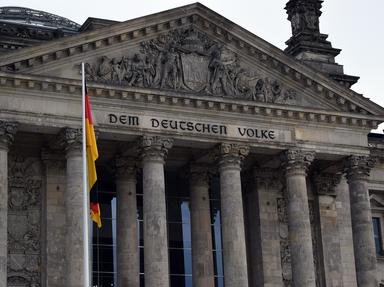Quiz Answer Key and Fun Facts
1. Which treaty formally ended World War I between Germany and the Entente (Allies)?
2. In October and November 1918 Germany experienced a series of rapid constitutional changes that turned it into a republic. Who or what was principally behind most of these changes?
3. What was the name of the German parliament?
4. The Communist Party of Germany was formed at the very end of 1918. The core of the new party was made up of Spartacists. Which of the following was NOT a Spartacist?
5. What is the abbreviation by which the German Communist Party was known for most of the interwar period?
6. Which new currency was introduced to help combat hyperinflation in 1923?
7. How long was Hitler's prison sentence after the failed Munich Putsch of 1923?
8. The Nazis never gained 50% (or more) of the popular vote in a free general election.
9. Which law allowed parliament to be bypassed when making laws in Nazi Germany?
10. Which of these had the Nazis done by the end of 1933?
Source: Author
jesus_rocks
This quiz was reviewed by FunTrivia editor
bloomsby before going online.
Any errors found in FunTrivia content are routinely corrected through our feedback system.

